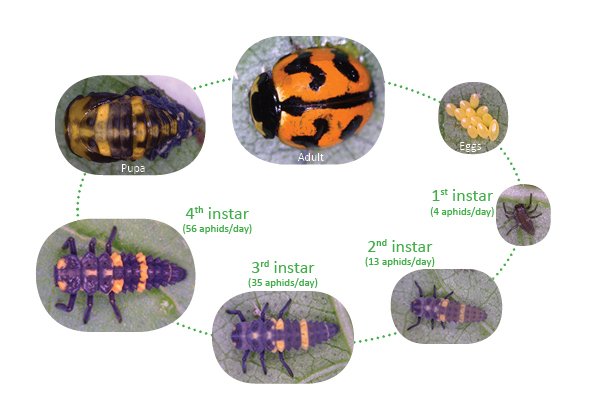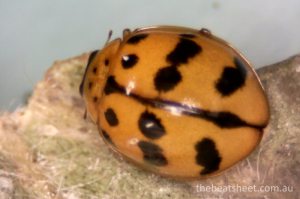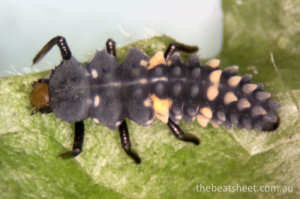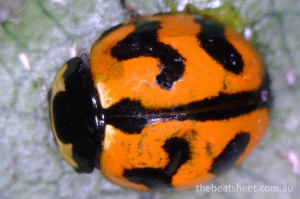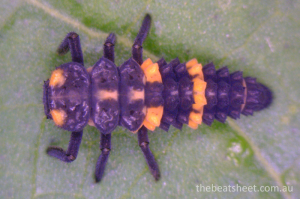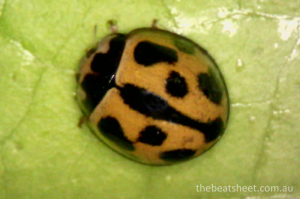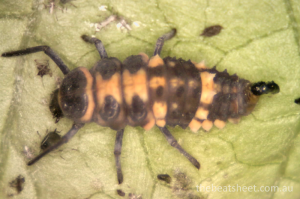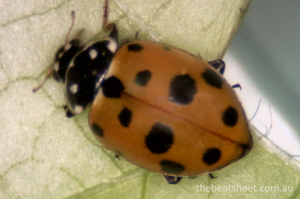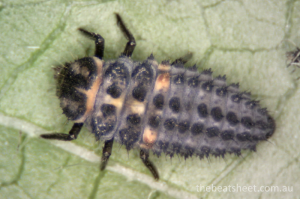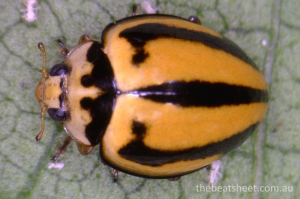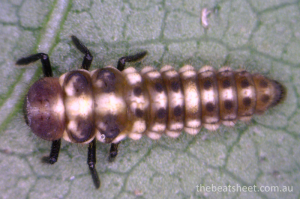Adult ladybird beetles are one of the most easily recognisable natural enemies in cropping systems. Both adults and larvae are voracious predators, and can have a considerable impact on pest populations, particularly aphids.
Several species of ladybird beetles are commonly encountered each year in grain, pulse and cotton crops. Ladybirds are often attracted into crops by the presence of aphids, but will feed on a range of other soft-bodied pest insects as well, including thrips, mites, mealybug and small caterpillars.
When ladybird beetles commence reproduction (mating pairs or eggs can be seen in the crop), it often means aphid populations will be suppressed over the coming weeks, as the larvae develop. The example lifecycle below shows approximately how many aphids are consumed by each larval stage. Development from egg to adult usually takes about 20 days.
While the adult markings of most ladybird beetles are distinctive and enable species to be readily identified, the patterns on the juveniles are not as striking, especially in the earlier instars. For this reason we have developed a visual key of the larvae (available from the Beatsheet’s publications page), by collecting the most commonly found species in broadacre crops and rearing them in the laboratory.
At this stage, we know only a little about what preferences each species has for different prey (aphid, mites, whitefly, thrips, etc), or how many prey they will eat. Therefore, it is not yet possible to incorporate numbers of ladybirds into economic thresholds. However, knowing that ladybirds are present in a crop (and reproducing) may influence your decision to reassess pest populations in a few days (or in their absence to treat sooner). As we learn more about each species, we hope to gain knowledge of which species are better at handling bigger pests like mealybugs, and which may have a strong preference for aphids.
One species that has been studied to determine its potential impact on cotton aphid is the minute two spotted ladybird (Diomus notescens). The results of this work illustrate how consumption rates could be included in management decisions.
Common ladybird adults and their late instar larvae
Three banded ladybird Harmonia octomaculata
Transverse ladybird Coccinella transversalis
Variable ladybird Coelophora inaequalis
(Note: there can be a wide range of patterning in the adult variable ladybird)
White collared ladybird Hippodamia variegata
Striped ladybird Micraspis frenata
Pictures of ladybird pupae of these species are included in the Beatsheet’s image gallery.
Article by Jamie Hopkinson
Photos by Tonia Grundy and Steph Pumpa

